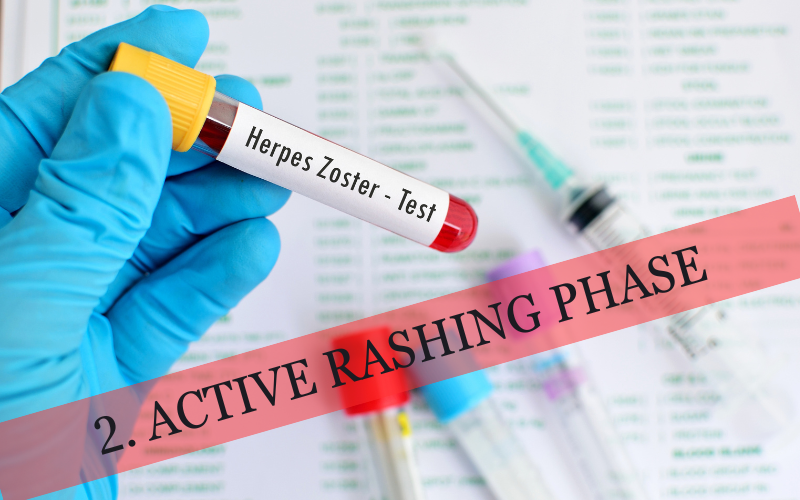2. Active Rashing Phase: Shingles Comes to the Fore

With the prodromal stage acting as a prelude, the active rashing phase is where shingles truly makes its presence felt. It’s the stage most associate with the condition, characterized by the emergence of the signature rash.
The rash typically begins as a cluster of red patches. These patches aren’t just random; they usually follow a dermatomal distribution, aligning with the nerves affected by the virus. The clusters gradually evolve, transforming into small blisters filled with a clear fluid. These blisters might resemble dewdrops on a rose petal, a poetic yet painful manifestation of shingles.
As days pass, the fluid in the blisters becomes cloudier. They might merge, forming a larger blister or remain distinct. Surrounding the blisters, the skin may appear reddened and feel warm to touch. The entire area can become tender, making even the slightest friction feel uncomfortable.
The discomfort isn’t just skin-deep. Apart from the external manifestations, this phase can also usher in feelings of malaise, fatigue, and even a mild fever. The body’s battle against the virus is in full swing, and the immune response can be taxing.
Despite the physical discomfort, there’s a silver lining. Once the blisters crust over and begin to heal, it signifies the nearing end of this tumultuous phase. The journey might have been rough, but healing is on the horizon. (2)